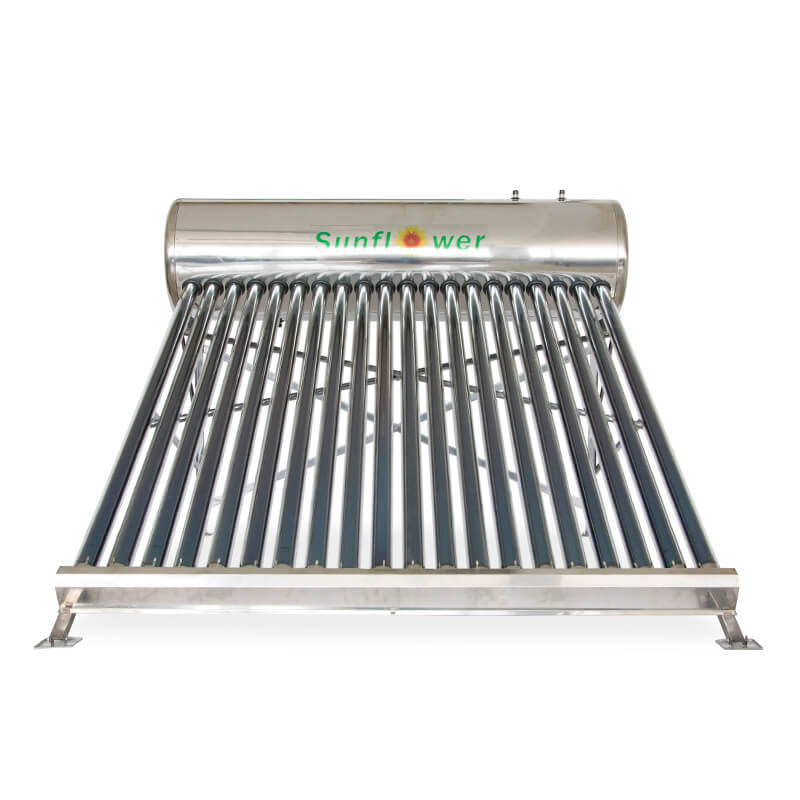Views: 4 Author: Site Editor Publish Time: 2023-11-09 Origin: Site

[Abstract]
Solar water heaters, also called solar domestic hot water systems, can be a cost-effective way to supply hot water for your home. They can be used in any climate with backup power, and the fuel they use – sunshine, is free.
[Text]
How They Work
Solar water heating systems include solar collectors and storage tanks. If you have settled on the idea of installing a solar hot water heater in your home to replace the traditional one, you have several options. Depending on the climate in which you live, some of the choices will not be available to you. Perhaps the first thing you must decide is whether to go with an active or a passive system.
Passive Solar Water Heating Systems
The passive system uses controlled pumps and valves to move the water from the intake pipe to the solar collector and back into the tank. Most passive systems perform these tasks automatically. There are two types of passive solar water heating systems:
Direct circulation systems
Pumps circulate household water through the collectors and into the home. They work well in climates where is warm, rarely freezing.
Indirect circulation systems
Pumps circulate a non-freezing, heat-transfer fluid through the collectors and a heat exchanger. This heats the water that then flows into the home. They are popular in climates prone to freezing temperatures.
Active Solar Water Heating Systems
Active systems, on the other hand, do not use pumps and controllers. Rather, they rely on gravity and the physical properties inherent in water that make it rise when heated.
Thermosiphon system is one of most common active systems.
Water flows through the system when warm water rises as cooler water sinks. The collector must be installed below the storage tank so that warm water will rise into the tank. These systems are reliable, but contractors must pay careful attention to the roof design because of the heavy storage tank.
Storage tanks and solar collectors
Most solar water heaters require a well-insulated storage tank. Solar storage tanks have an additional outlet and inlet connected to and from the collector. Three types of solar collectors are used for residential applications:
Evacuated-tube solar collectors
They feature parallel rows of transparent glass tubes. Each tube contains a glass outer tube and copper heat pipe attached to an aluminum fin. The fin's coating absorbs solar energy but inhibits radiative heat loss. These collectors are used more frequently for commercial applications.
Flat-plate collector
Glazed flat-plate collectors are insulated, weatherproofed boxes that contain a dark absorber plate under one or more glass or plastic (polymer) covers. Unglazed flat-plate collectors -- typically used for solar pool heating -- have a dark absorber plate, made of metal or polymer, without a cover or enclosure.
【Conclusion】
According to different types of solar water heater we mentioned above, here we have some hot selling models below
Active system---split pressure solar heating system
https://www.1stsunflower.com/SFBS-Split-Pressurized-Solar-Water-Heater-pd77029477.html
Passive system---compact solar water heater
https://www.1stsunflower.com/SFA-Compact-Non-Pressurized-Solar-Water-Heater-pd79373887.html
https://www.1stsunflower.com/SFD-Preheating-Solar-Water-Heater-with-Copper-Coil-pd71837887.html
https://www.1stsunflower.com/SFH-Integrated-Pressurized-Solar-Water-Heater-pd79537887.html
Before you decide to install a solar water heater, you can review these specifications to know product first then choose suitable one according to the locations, sizes and system efficiency etc.